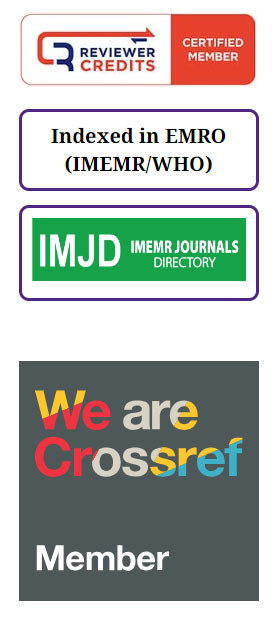Structural Evaluation of Interaction between HCV Enveloped Protein E1 and P2X4 Receptor on Hepatocytes
DOI:
https://doi.org/10.59119/ajms.2023(3).2.6Keywords:
Hepatocellular cancer, the hepatitis C virus, docking, and adenosine triphosphateAbstract
Background: Since the hepatitis C virus (HCV) is the primary cause of liver-related illnesses like chronic hepatitis, cirrhosis, fibrosis, and hepatocellular carcinoma, it poses a serious threat to global public health. HCV structural envelop protein E1 is the primary viral entrance protein. P2X receptors are ligand-gated by extracellular ATP and are non-selective ion channels. Among all P2X receptors, P2X4 and P2X7 are the proteins that are most frequently expressed in the liver
Objectives:
Methods: : This work used immunostaining to describe the P2X4 receptor in the Huh7 cell line. By measuring Ca2+ in the presence of an agonist using the Flex Station III, the functional activity of P2X receptors was validated (ATP). Using a zebra fish model as a starting point, molecular operating environment (MOE) software was used to construct the human P2X4 receptor (through homology modeling). On the website High Ambiguity Driven Biomolecular Docking (HADDOCK), P2X4 and E1 protein-protein interactions were investigated (PPIs).
Results: Our results demonstrate many sites of interaction between P2X4R and the HCV envelop E1 protein. In the Huh7 cell line, the P2X4 receptor was discovered and functionally activated. Additionally, interactions between the human P2X4 receptor and the HCV E1 protein may be indicative of viral entry and may one day be used as a therapeutic target.
Conclusion:
Downloads
Downloads
Published
Issue
Section
License
Copyright (c) 2024 Avicenna Journal of Medical Sciences

This work is licensed under a Creative Commons Attribution-NonCommercial 4.0 International License.






